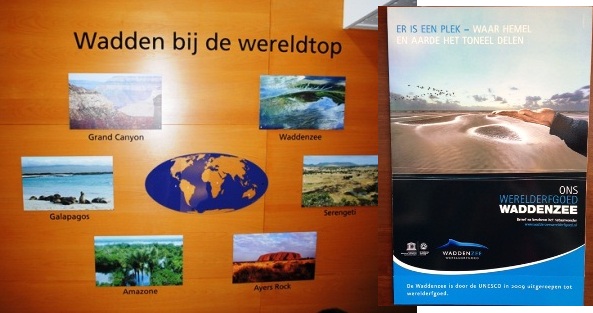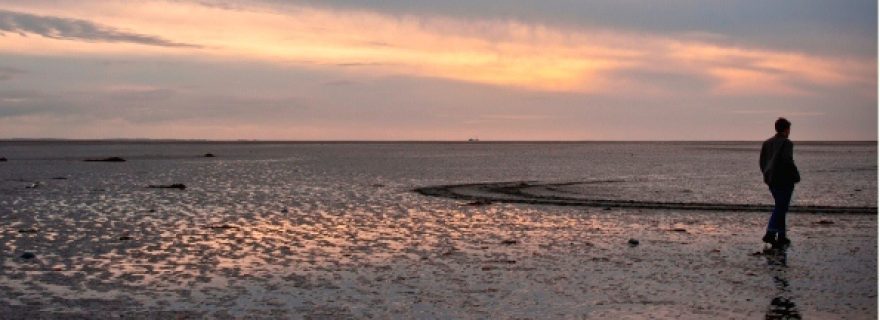World Heritage in the Netherlands (Part 1)
For exploration you don’t always have to go to the far and exotic: An anthropologist who studies world heritage discourse and practice in West Africa decides to be adventurous and explore a World Heritage site in her own backyard.
You know how in your own town or country you almost never visit the places of interest that tourists are eager to explore—and that you would visit if they were somewhere else? It’s a strange phenomenon, which might have to do with the fact that we tend to take our ordinary surroundings for granted. In response, some have called for pretending to be a tourist in your own town or country and looking at your regular environment with fresh eyes. I undertook just such an experiment the other day, even if not quite by design. My sister had invited me to join her and her family for a short vacation on Texel, and I was happy to come along. What was particularly interesting about Texel (at least to me) was that its surrounding Wadden Sea was classified as a World Heritage site in 2009.
The Wadden Sea as World Heritage: Some Student Research
As an anthropologist studying world heritage discourse and practice (mainly in relation to West Africa), I wanted to learn more about the World Heritage sites in “my own backyard,” so to speak. Additionally, I had recently attended two sets of presentations by groups of Leiden students who had done fieldwork on Texel and other Wadden Islands on the issue of the Wadden Sea’s entry in the World Heritage List. (One group consisted of 2nd year Anthropology/Development Sociology students; I wrote about the overall framework for the 2nd year fieldwork projects here, with a link to a student’s blog about his time on Ameland here. The other group comprised students from a variety of disciplinary backgrounds enrolled in this Honors course. Indeed, one of the great things about being an anthropology professor is that you get to learn from the work your students are doing!)
A recurrent theme in the student presentations was the feeling among policy makers, tourist workers, farmers, and fishermen that the World Heritage designation was “just a label.” Many locals also felt that the label could or should be better explained, both locally and to tourists. Tourists were researched in one subproject, from which it appeared that they didn’t visit the Wadden Sea or the Wadden Isles specifically because of the World Heritage designation. Although comprehensive data are lacking, it is safe to say that the World Heritage status of the Wadden Sea is not common knowledge among tourists.
Looking for Heritage as a Tourist on Texel
Inspired by this body of student research, I decided to do some experiental research myself as a tourist on Texel. In my two days there, would I be alerted (by signs, tourist workers, brochures, or other means) that the Wadden Sea was a World Heritage site? What else would be explained about the WH status? Would my fellow travelers know about this status, and what did they think of it if they did know, or learned about it?
Here are some of my—very unscientific!—results. First, for me it was hard not to notice the Wadden Sea’s World Heritage status, because I was obviously looking for ways in which this would be noted. Still, the placement of a sign proclaiming the Wadden Sea “UNESCO World Heritage” on the side of the road right when you come off the boat seemed pretty obvious. My sister, who was not in on my plan to do some World Heritage-related investigating, immediately proposed that we visit the Wadden Sea on our first evening—and there we were again greeted by a brown UNESCO World Heritage sign. However, on my way to Texel, I had not seen any reference to the World Heritage designation. On the boat from Den Helder to the island, I picked up two free magazines, Texel Nu (Texel Now) and Natuureiland Texel (Nature Island Texel), but in their combined 72 pages of information there was not a single mention of the World Heritage status, except for one advertisement (for a boat trip).
.jpg)
The cousins under the UNESCO sign at the Wadden Sea that proclaims its status as World Heritage. (Photo courtesy Marije Florusbosch)
At the site of the Wadden Sea, I asked the 11- and 12-year old cousins if they knew what the “World Heritage” designation meant. It turns out they did. “It means that a building or a place, or here a sea, is very special and beautiful,” one of them said. “It doesn’t necessarily have to be beautiful, or even old, but it is something that we need to protect so that it remains,” another added. Quite impressed by their level of knowledge, I found out that they had learned about heritage in school and through the educational tv program Jeugdjournaal, on the occasion of the designation of the Van Nelle factory as a World Heritage Site earlier this year.
The next day, I suggested a visit to Ecomare as our outing for the day, as I knew from the students’ work that this education center is the prime tourist resource regarding the Wadden Sea (plus, I figured the cousins would like the seals). Ecomare boasts a prominent exhibition on the Wadden Sea’s World Heritage status on the first floor, which does a good job explaining what the status means and why it was awarded to the Wadden Sea.

Opening panel at the Ecomare exhibition on the World Heritage status of the Wadden Sea. (Photo courtesy Patrick Lijkendijk)
Unfortunately, almost none of this information is available on the center’s website, even if the site does briefly mention World Heritage. On the second floor, a table immediately to the side of the staircase features attractive brochures (available in different languages) about “Our Wadden Sea: World Heritage,” which visitors can take home. Clearly, if you want to find out about World Heritage on Texel, you can.
Of course, the question remains if and how visitors encounter the Wadden Sea’s World Heritage status if they aren’t explicitly looking for it.



0 Comments
Add a comment